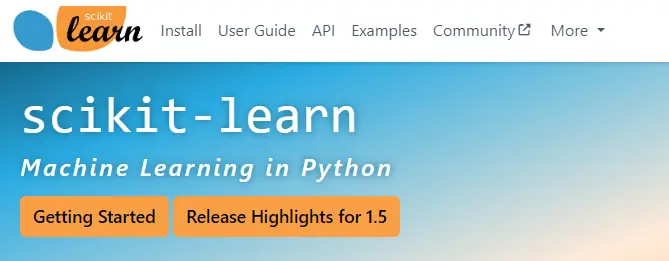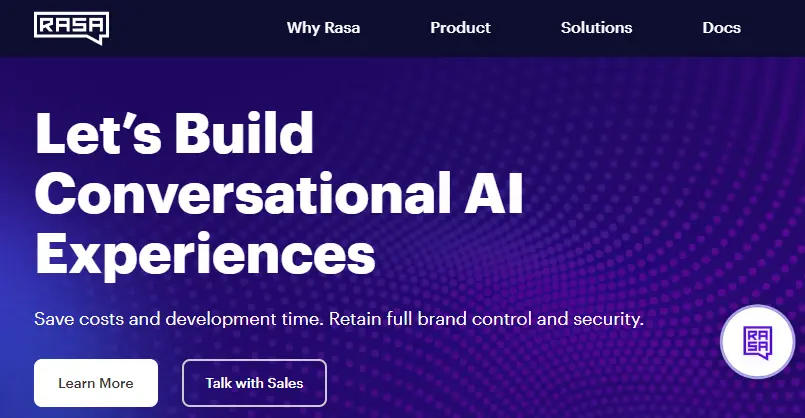Artificial Intelligence (AI) is revolutionizing the way we build software. Open-source AI coding tools provides more accessible and powerful frameworks for developers at all levels. In this article, we listed 7 best open-source AI coding tools that every developer should know. From Google’s robust TensorFlow to Facebook’s dynamic PyTorch, and the versatile Keras to specialized libraries like OpenAI Gym, Scikit-learn, OpenCV, and Rasa, these tools are essential for building and deploying cutting-edge AI models.
Each of these frameworks offers unique features and capabilities, making them invaluable assets for any AI developer’s toolkit. Explore these top tools and discover how they can help you elevate your AI projects to the next level.
Best open-source AI coding tools
- TensorFlow
- PyTorch
- Keras
- OpenAI Gym
- Scikit-learn
- OpenCV
- Rasa
1. TensorFlow
Developed by Google, TensorFlow is a comprehensive open-source machine learning framework widely used for building and deploying machine learning models. It supports multiple programming languages, including Python and JavaScript, making it versatile for various applications.

Key Features:
- Scalability for large datasets and distributed computing.
- Extensive libraries and pre-trained models for tasks like image recognition and natural language processing.
- Strong community support and extensive documentation.
TensorFlow is often used in large-scale applications such as automated image classification for healthcare, predictive modeling in finance, and advanced natural language processing for customer service.
2. PyTorch
PyTorch, developed by Facebook’s AI Research lab, is known for its user-friendly interface and dynamic computation graph. It is particularly favored in academia and industry for deep learning applications.

Key Features:
- Intuitive design facilitating rapid prototyping.
- Strong integration with Python libraries and GPU acceleration.
- Excellent support for computer vision and natural language processing tasks.
Researchers and developers favor PyTorch for real-time model training and prototyping. It is frequently used in deep learning research projects and applications requiring fast iteration cycles, such as autonomous driving and image generation.
3. Keras
Keras is a high-level neural networks API written in Python that runs on top of TensorFlow. It simplifies the process of building deep learning models, making it accessible for beginners while still powerful enough for experts.

Key Features:
- User-friendly API that allows quick model building.
- Supports multiple backends (TensorFlow, Theano, CNTK).
- Extensive documentation and community resources.
Keras is popular for rapid prototyping and is used widely in industry and academia for applications like medical imaging, financial forecasting, and sentiment analysis.
4. OpenAI Gym
OpenAI Gym is a toolkit for developing and comparing reinforcement learning algorithms. It provides a variety of environments to test your algorithms, making it an essential tool for researchers in AI.
Key Features:
- Wide range of environments from simple to complex.
- Easy integration with other libraries like TensorFlow and PyTorch.
- Strong community support and continuous updates.
OpenAI Gym is widely used for developing reinforcement learning agents in simulations, such as robotics, gaming, and autonomous vehicle testing.
5. Scikit-learn
Scikit-learn is a powerful Python library designed for machine learning and data analysis. It offers simple and efficient tools for data mining and data analysis, built on NumPy, SciPy, and matplotlib.

Key Features:
- Comprehensive collection of supervised and unsupervised learning algorithms.
- Easy-to-use interface suitable for both beginners and experts.
- Strong emphasis on performance and efficiency.
Scikit-Learn is used in a variety of applications, including predictive analytics in finance, recommendation engines for e-commerce, and customer segmentation in marketing.
6. OpenCV
OpenCV (Open Source Computer Vision Library) is a library aimed at real-time computer vision. It provides tools to process images and videos to identify objects, faces, or even handwriting.

Key Features:
- Extensive library of functions for image processing.
- High performance in real-time applications.
- Cross-platform compatibility, supporting languages like C++, Python, and Java.
OpenCV is widely used in fields like autonomous driving, robotics, and augmented reality for tasks that involve facial recognition, object tracking, and edge detection.
7. Rasa
Rasa is an open-source framework specifically designed for building conversational AI applications such as chatbots. It allows developers to create highly customizable AI assistants using natural language processing.

Key Features:
- Ability to integrate various NLP models.
- Strong focus on context management in conversations.
- Flexibility to deploy on any platform or cloud service.
Rasa is popular for developing chatbots and voice assistants for customer service, virtual assistance, and e-commerce, as it provides robust support for conversational flows and context management.
Additional Tools Worth Exploring
- Hugging Face Transformers is a popular open-source library for natural language processing tasks, such as text classification, translation, and summarization. It supports a wide range of pre-trained models and is widely used in NLP and deep learning research.
- Use Case: NLP applications, especially in domains requiring text understanding, like sentiment analysis, document classification, and machine translation.
2. ONNX (Open Neural Network Exchange)
- ONNX is an open-source format for AI models, making it easier to switch between AI frameworks and deploy models across different platforms.
- Use Case: Ideal for developers who need interoperability between different AI frameworks like TensorFlow and PyTorch.
- DVC helps manage datasets and version machine learning models, which is critical for larger projects requiring reproducibility and collaboration.
- Use Case: Commonly used in data science and ML projects where data management and tracking model evolution are essential.
Conclusion
When selecting an AI tool, consider the specific requirements of your project. For deep learning, TensorFlow and PyTorch are highly recommended, while Scikit-learn is ideal for machine learning. For computer vision projects, OpenCV offers extensive capabilities, and Rasa is perfect for building chatbots and conversational agents. Each of these tools brings unique strengths to the table, so choose the one that best aligns with your goals.